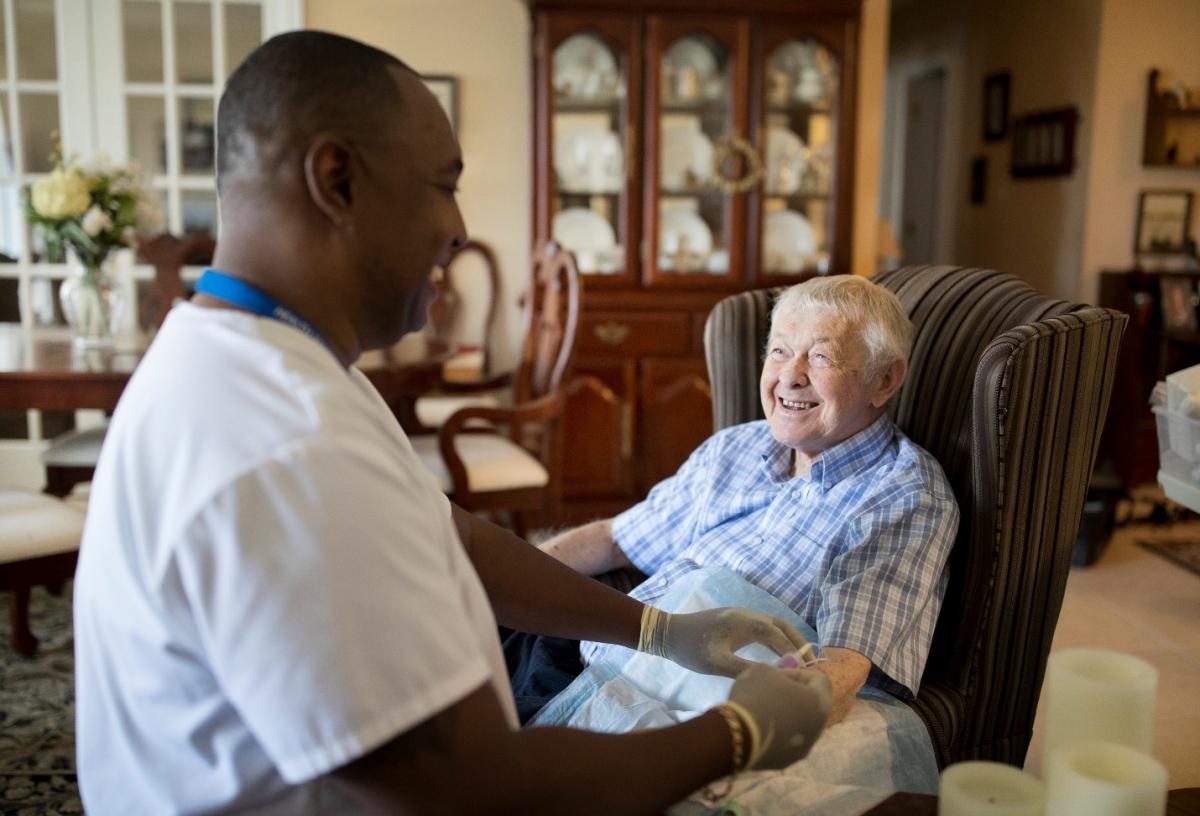Thinking about Long-Term Care, at Home (anglais)

VON RN, Gareth, caring for a client at home in August 2019.
Article by Jo-Anne Poirier, President and CEO, VON Canada. Originally published on LinkedIn.
Last week, I had the opportunity to present to the Standing Committee on the Legislative Assembly as Ontario considers Bill 175, Connecting People to Home and Community Care Act.
As an organization that has been serving communities in Ontario and across Canada for more than 120 years, VON values the efforts of government to improve our health system as a whole.
Home and community care are vital components of Canada’s overall health care system. We provide life-sustaining clinical care and support at home to people of all ages, and with a wide range of complex and acute health challenges. Community support programs like meals on wheels, transportation and adult day programs reduce social isolation and help seniors remain healthy and independent. Overall, home and community care reduce hospital visits and help keep people out of long-term care. They are the lowest-cost component of our health system, and have the added benefit of enabling people to remain at home, where they want to be.
In my presentation to the Standing Committee, I urged members to consider lessons learned to date from COVID-19 as government looks to implement the new Home and Community Care Act.
If we have learned anything during the COVID-19 pandemic, it is that home is the safest place to receive care. Infection rates among home care clients and employees are lower by far than in any other part of the health sector.
And yet, as our health system prepared for the pandemic, home care visits were pulled back, elderly patients in hospital were shifted into long-term care, and tragically, infection rates among seniors soared. Our health system’s approach to the pandemic has destabilized the home and community care sector, with literally thousands of home care employees across Ontario leaving the sector due to lack of stable work. Individuals and families have been left with little to no alternative care options, often having to visit emergency rooms, putting themselves and their loved ones at risk.
André Picard expressed it this way in his June 16th Globe and Mail column: “Out of fear of a mass influx of coronavirus patients that could overwhelm hospitals, beds were emptied in record time. Virtual care was embraced (…). Elective surgeries were cancelled. Patients listed as needing an "alternate level of care" – meaning they were discharged, but also classified as too "high-need" to go home – occupied as many as one-third of hospital beds and were shipped off to long-term care and nursing homes. Virtually no one was discharged to the safety of their own home. And those who were already getting home-care services saw these services cut back drastically.”
We have all learned a lot during COVID. If and when we are faced with the second wave of the virus, we must ensure that all parts of the health sector are ready to provide the best support possible to Ontarians. We must re-think how home and community care are delivered – to streamline access and to help keep our citizens out of hospital and long-term care. In fact, to deliver “long-term care at home”.
VON and other providers in our sector can help develop the solutions. We will need the support and commitment of government to address longstanding obstacles including how home care is allocated by government, and how front-line workers are paid. We need a system that provides greater access to home care for patients and their families, more stable employment for front-line home care workers, and better ways to match providers and patients to ensure continuity of care. This can only be accomplished by significant change in how the home and community system works.
All of us – government, home and community care providers, hospitals, long-term care providers – want the same thing – to serve Ontarians well. To keep people safe and well, to provide care to those in poor and failing health, and to ensure access to the right care, at the right time, and in the right place. For VON, the right place is home.


